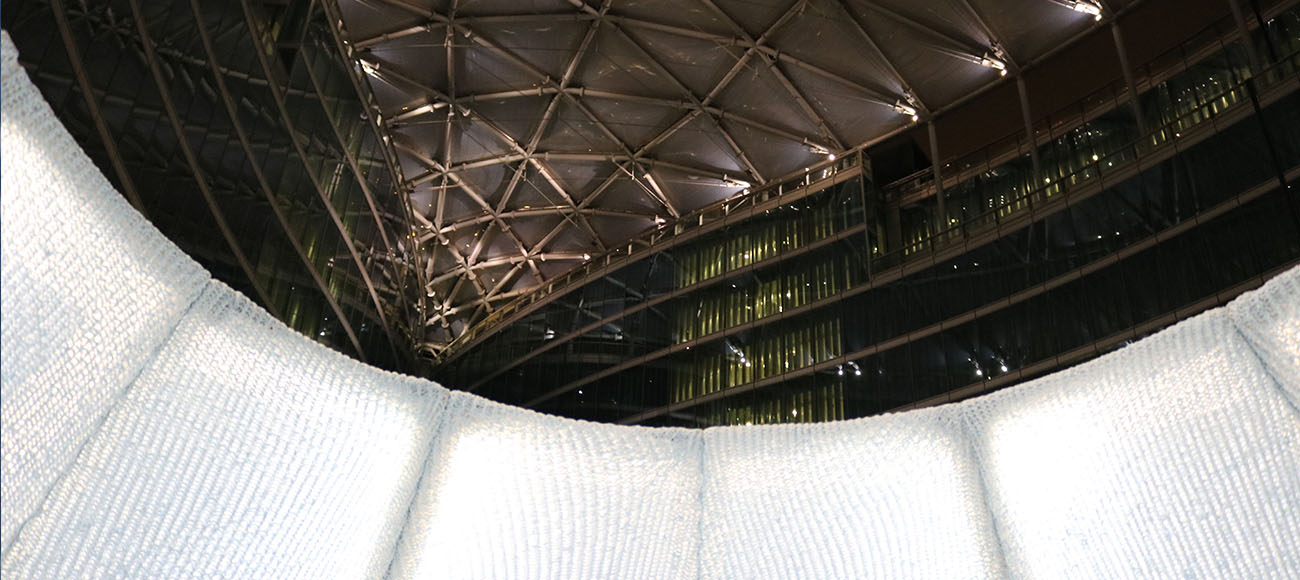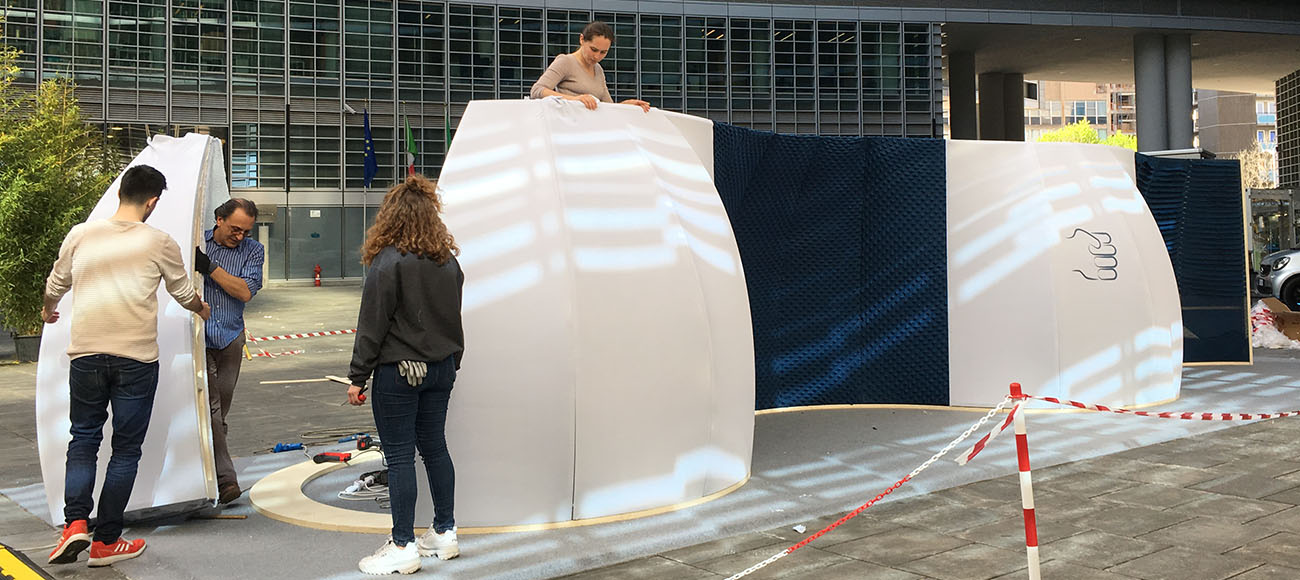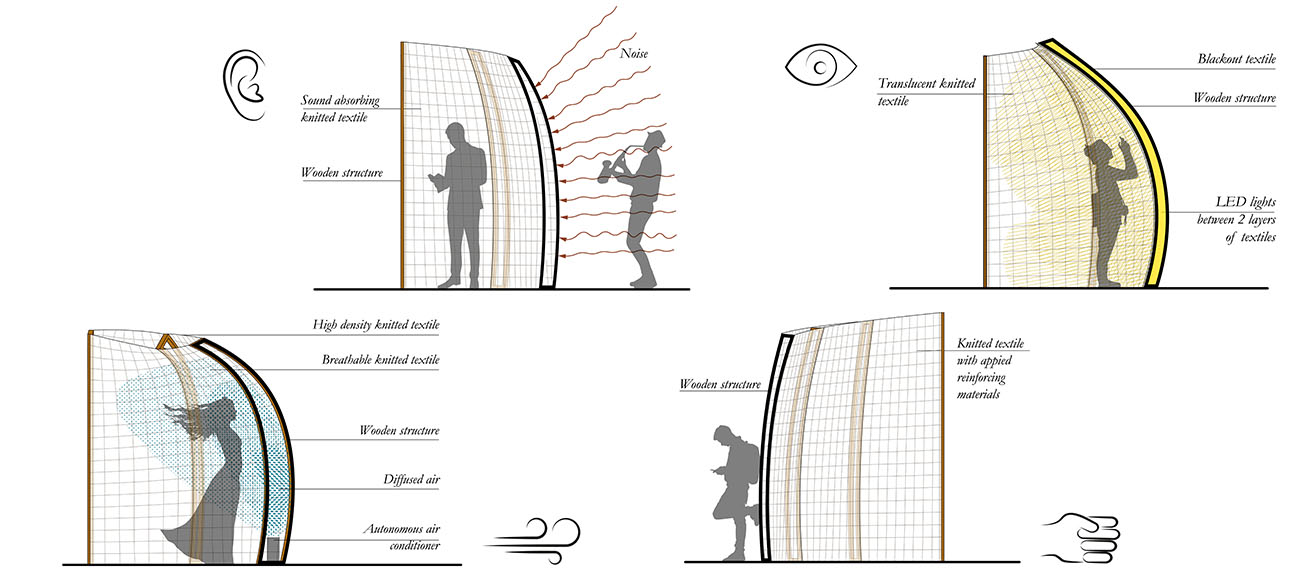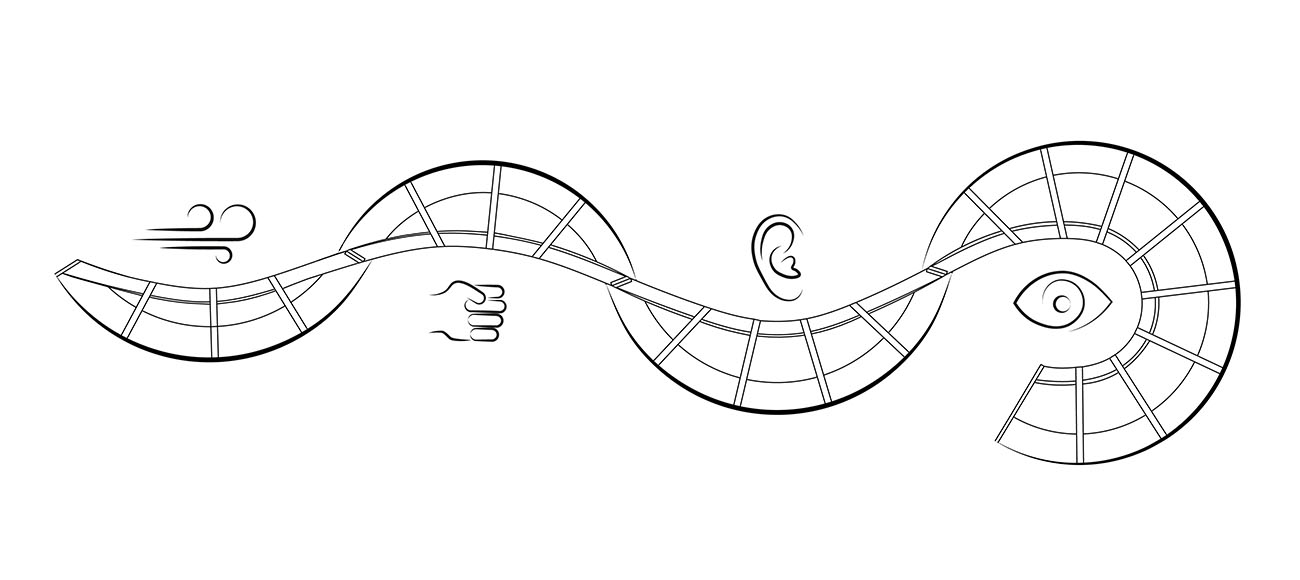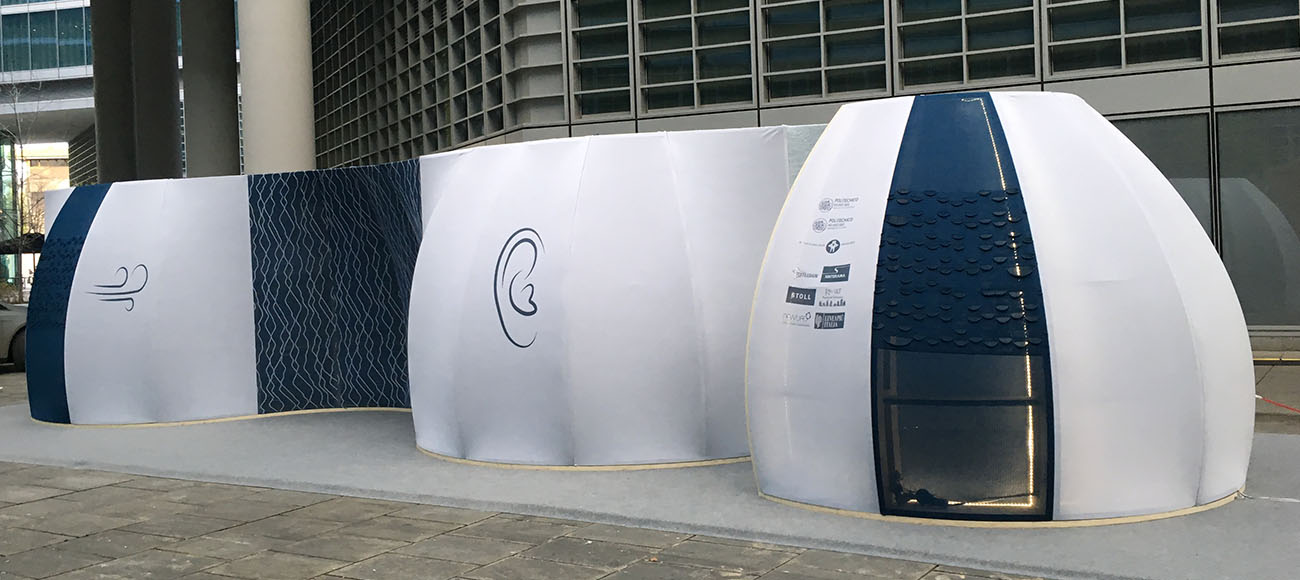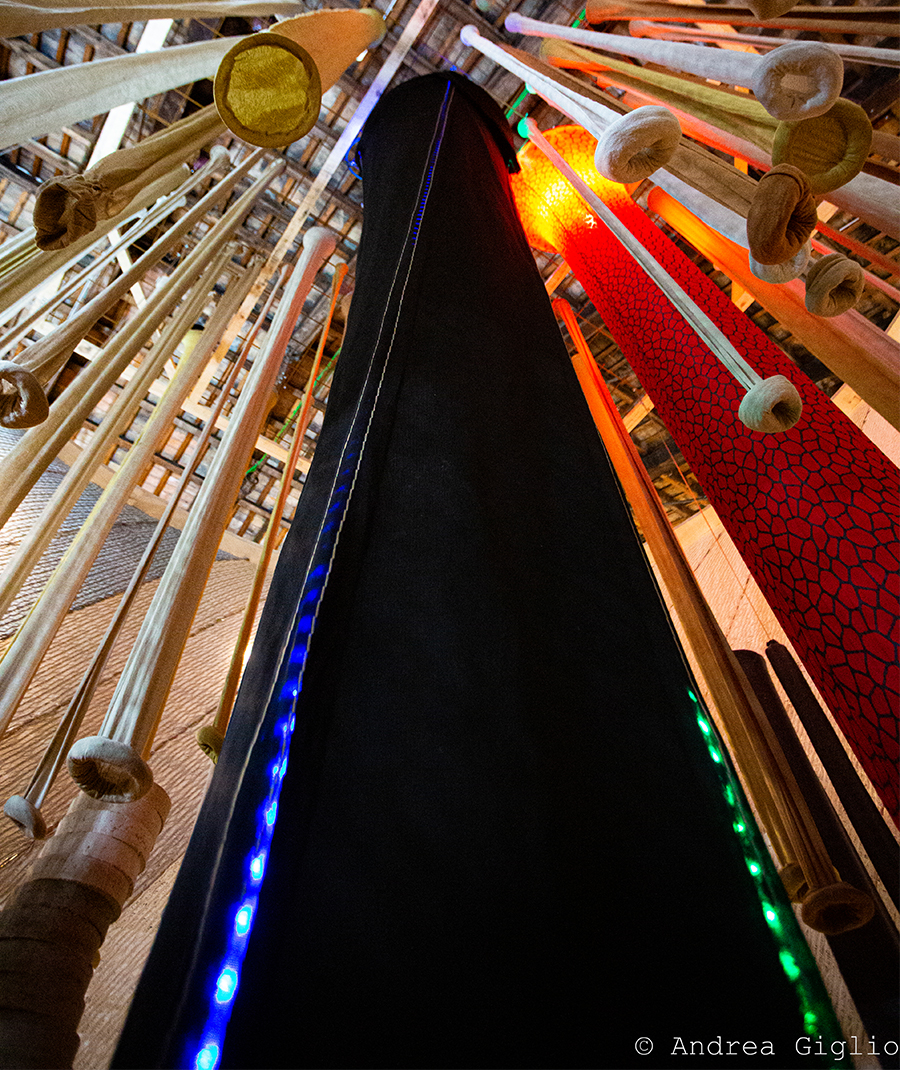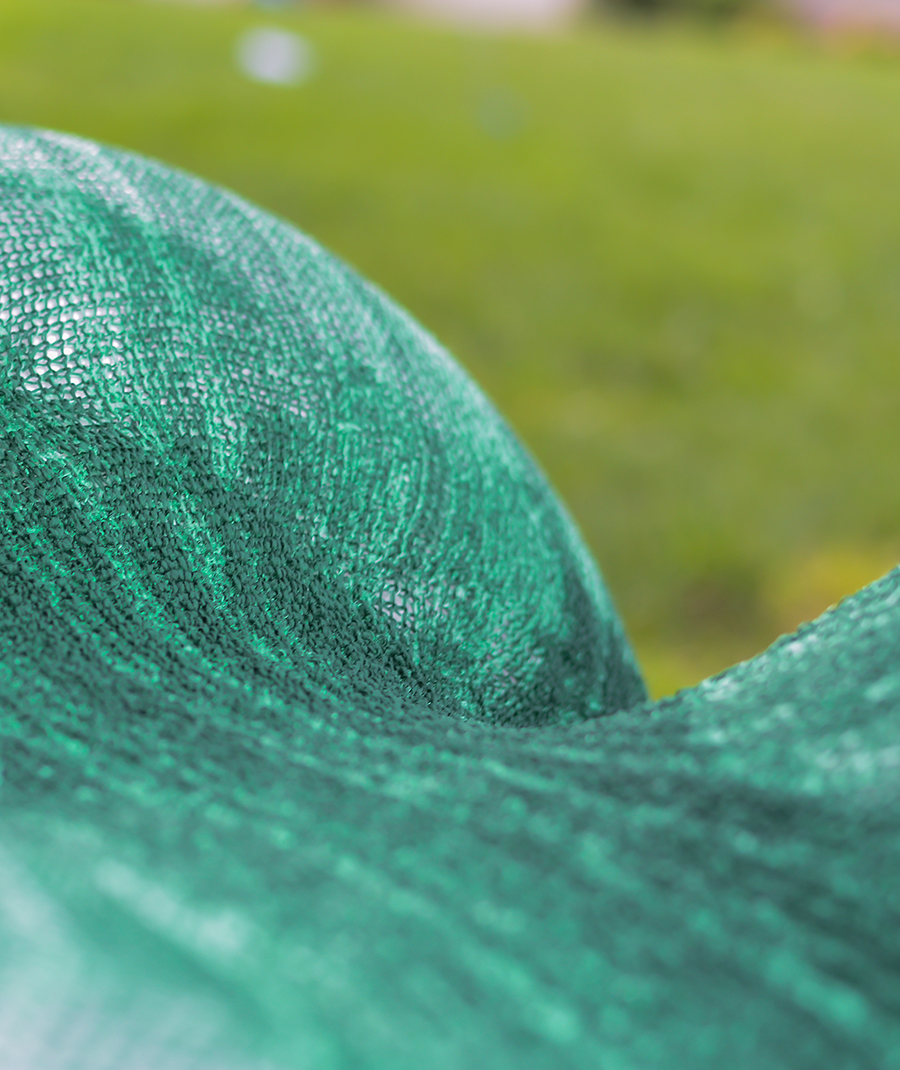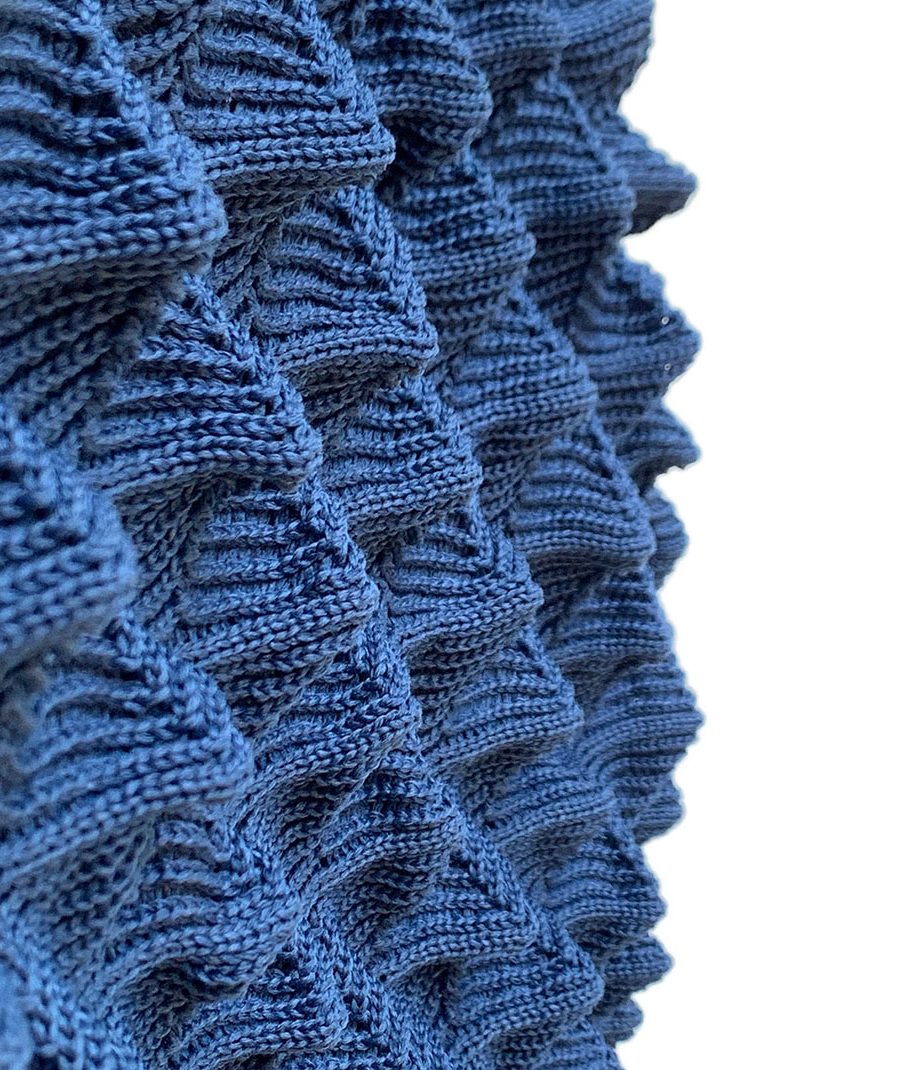Senseknit, presented at MADE EXPO 2019, Design Week 2019 and Tensinet Symposium 2019 in Milan, is a sensorial pavilion that combines tradition, innovation and digital culture – key elements of the transformation of the fields of design and construction. The project is a result of an interdisciplinary research at Politecnico di Milano by the Material Balance Research group, SAPERLab and TextilesHUB from the Department of Architecture, Built environment and Construction engineering and the Laboratory of Knitting from the Department of Design.
Textile environments can be a sustainable alternative to the conventional construction materials under the condition, that they can satisfy the aspects of safety and architectural comfort. Both can be controlled on the levels of fibre composition and the way of the textile production. The aim of the ‘Senseknit’ pavilion is to use the engineered fibres and the advanced technology of digital knitting to investigate the way how textiles can influence architectural comfort, being at the same time strong and safe.
The pavilion is designed as a single curved wall. Bending and curving it is forming 4 partly closed areas which are used to demonstrate different architectural qualities of the textiles. The base structure is done with wood cut with the CNC machine and assembled in 22 single panels that are easy to transport and assemble.
The entire structure is covered with 90m2 of knitted textiles, optimized with the technology of digital knitting. This technology permits complex, seamless three-dimensional shapes to be created in a fast and waste-free manner. Linking it with the performance-driven modelling programs it permits to achieve higher performance textiles using less material. This enables heterogeneous patterns and material composition to be achieved.
The first version of the textiles was realized with the support of Shima Seiki knitting machines and Milan based digital knitting company Iafil. The second edition was done with the Stoll digital knitting machines and the collaboration with the company Kn-hit, dynamic and novel initiative of the knitted textile sector.
The knitted textiles were produced of performative fibres with advanced properties, specifically a polyester fibre produced from the post-consumer plastic bottles Newlife™ by Sinterama, including special HollowCore fibers for the noise absorbing effect. In other parts
of the pavilion, light-sensitive fibre Lumen by LineaPiù Italia were used instead. These fibres are coated with photosensitive pigments, transparent to the normal light, but have the capacity to change colour when exposed to ultraviolet light.
The pavilion ‘SenseKnit’ consists of four thematic areas that offer different scenarios of sensorial comfort, thanks to the different types of fabrics produced specially for each area. These areas provide specific performative characteristics; acoustic, climatic, visual and structural. The areas are designed as a response to the needs of the contemporary architectural space evolving at a rapid pace.
The acoustic comfort is an essential requirement for different contexts, for shared and crowded spaces. The textiles for the acoustic part were produced of the special noise absorbing fibre and formed in a 3d-pattern, that increases the acoustic performance. The structural performance is enhanced by identifying the areas of textiles exposed to the highest loads and stress and using knitted patterns to offer more load resistance. This creates a lighter structure, keeping the reinforcement where needed only.
From the climatic point of view, the knitted textiles are used for the control of air movement to obtain distributed flow. Textiles with differentiated density distribution help to block or free the air flow to obtain the desired effect. From the optical point of view, the level of openness of the knitted textiles helps to control the level of light and to create desired visual effects, filtrating the light in different modes and intensity.
The proposed scenarios display the potential of digital knitting and technical fibres, as advanced technologies and materials that can revolutionize the way we design and inhabit spaces. This intuitive environmental performance of the knitted textiles, with performative
purposes, transforms the ancient tradition of the past into a future perspective.



